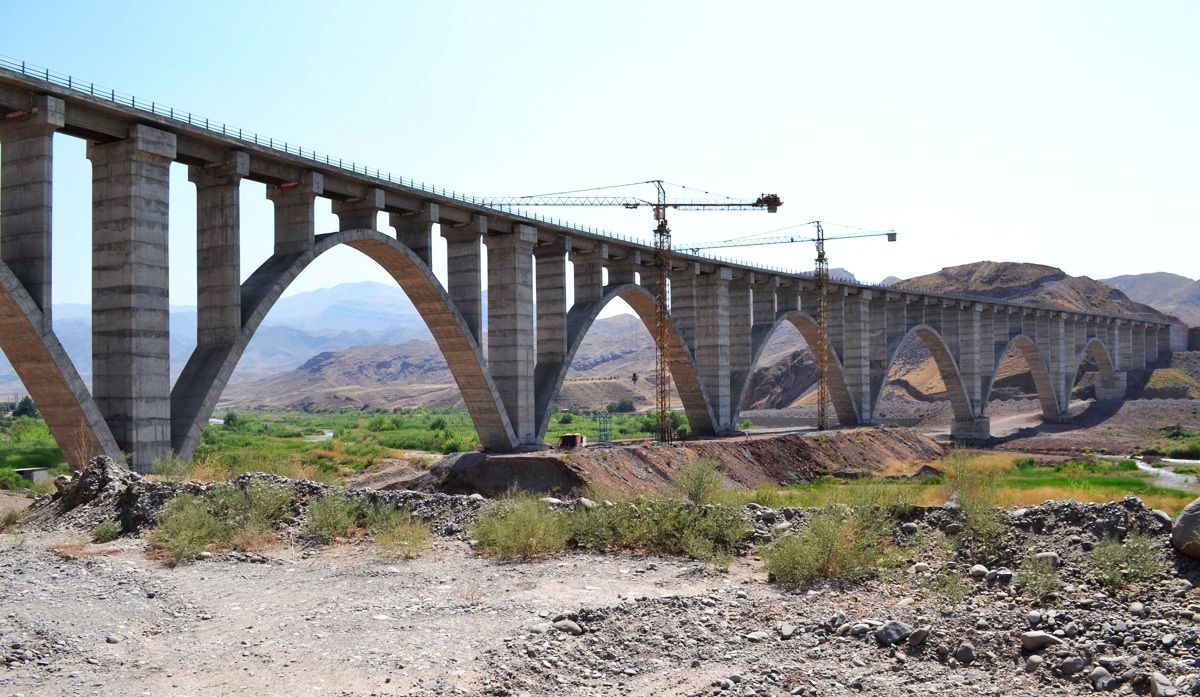Astara–Rasht–Qazvin railway: what are new prospects for Azerbaijan?

Finally, Russia and Iran agreed to complete the construction of the Astara–Rasht–Qazvin railway line, which is part of the International North-South transport corridor. However, the construction of the railway line, more precisely the Rasht-Astara section, could not be completed due to some technical issues in Iran. Later it was reported that the problem resolved and in two years the construction is expected to be completed.
The Astara–Rasht–Qazvin railway is a transport corridor that connects existing railways of Russia, Azerbaijan, and Iran. The purpose of the project is to integrate the transport and information routes of Russia, Azerbaijan, Iran, and India. With the help of this transport corridor, transport costs and duration are reduced.
In a comment on the issue, the expert in transport and logistics Rauf Aghamirzayev said that the launch of the Rasht-Astara railway line will increase the importance of Azerbaijan and the general South Caucasus transport network in the region.
“As for its benefits for Azerbaijan, it will ensure the country's access to the Persian Gulf and ports on the coast of the Indian Ocean. What is more interesting is that such a route has existed before. In 1903, the Alexandropol-Iravan-Ulukhanli-Julfa railway was later connected with the Julfa-Tabriz railway, providing access to the Indian Ocean and the Persian Gulf. However, the Karabakh War in the 1990s and the occupation of Azerbaijani lands for 30 years led to the closure of this traditional route. Notwithstanding, the restoration of that road is underway in the direction of the Zangazur corridor. After the disruption of communications between Azerbaijan and Armenia following the Garabagh war, the Rasht-Astara railway line, which is an element of the North-South international transport corridor, has become relevant for the last 20 years. The opening of these transport corridors will have a positive effect on the general traffic passing through Azerbaijan,” Aghamirzayev said.
Especially recently, Armenians started claiming that Russia and Iran would prefer Armenia to Azerbaijan with respect to the tense political relations between Iran and Azerbaijan. However, the expert noted that Armenians confuse the South-West Corridor with North-South Corridor. He commented that Iran is interested in the South-West Corridor, but even in this case, Armenia cannot be an alternative to Azerbaijan.
“Iran's interest here is to provide access to the Black Sea from south, that is, from the Persian Gulf. This also looks interesting from Armenia. But this is rhetoric. What do we have in the field, or what do we have in the region? There is a road and a railway. But which country can carry more cargo? Is it more securer in terms of risks? If we take these into account, we will see that Azerbaijan is the one that meets all these requirements. The country has invested enough in the transport infrastructure in the last 16 years. The existing transport network is diversified. In other words, it can offer not one, but several directions. The transport infrastructure currently being built in Garabagh and eastern Zangazur will further expand these opportunities. But what is there in Armenia? Armenia's existing North-South highway, which began to be constructed in 2009, is only 5 percent completed. Armenia has opened a total of 31 km in 14 years, and at the end of last year, an additional 18 km was opened, out of a total of 556 km,” he said.
He noted that transportation by train is easier and cheaper than cargo. However, the railway almost does not exist in Armenia due to its invading foreign policy.
“Transportation by road is more expensive than by rail. In terms of mobility and accessibility, straight highways are more convenient. However, in terms of efficiency, cost-effectiveness, and volume of cargo transportation, railways have no competitors in land transportation. Armenia's railways are a dead end.
That is, due to the Karabakh issue, the borders with both Azerbaijan and Turkiye are closed, which could provide more traffic. The road from the south must pass through the Nakhchivan region, an exclave of Azerbaijan, which is closed due to the war. The only open part goes to Georgia, and it is open for traffic due to Armenia's own needs. Armenia does not have such an opportunity for the passage of international goods. It is also not effective if we consider the car and partly railway multimodal freight transport. From this point of view, peace should be ensured in the region, and if peace is ensured, communications with Azerbaijan will soon be opened. And if there are not one but several railway exits, transportation of these cargoes in different directions can be organized,” the expert concluded.
---
Follow us on Twitter @AzerNewsAz
Here we are to serve you with news right now. It does not cost much, but worth your attention.
Choose to support open, independent, quality journalism and subscribe on a monthly basis.
By subscribing to our online newspaper, you can have full digital access to all news, analysis, and much more.
You can also follow AzerNEWS on Twitter @AzerNewsAz or Facebook @AzerNewsNewspaper
Thank you!


